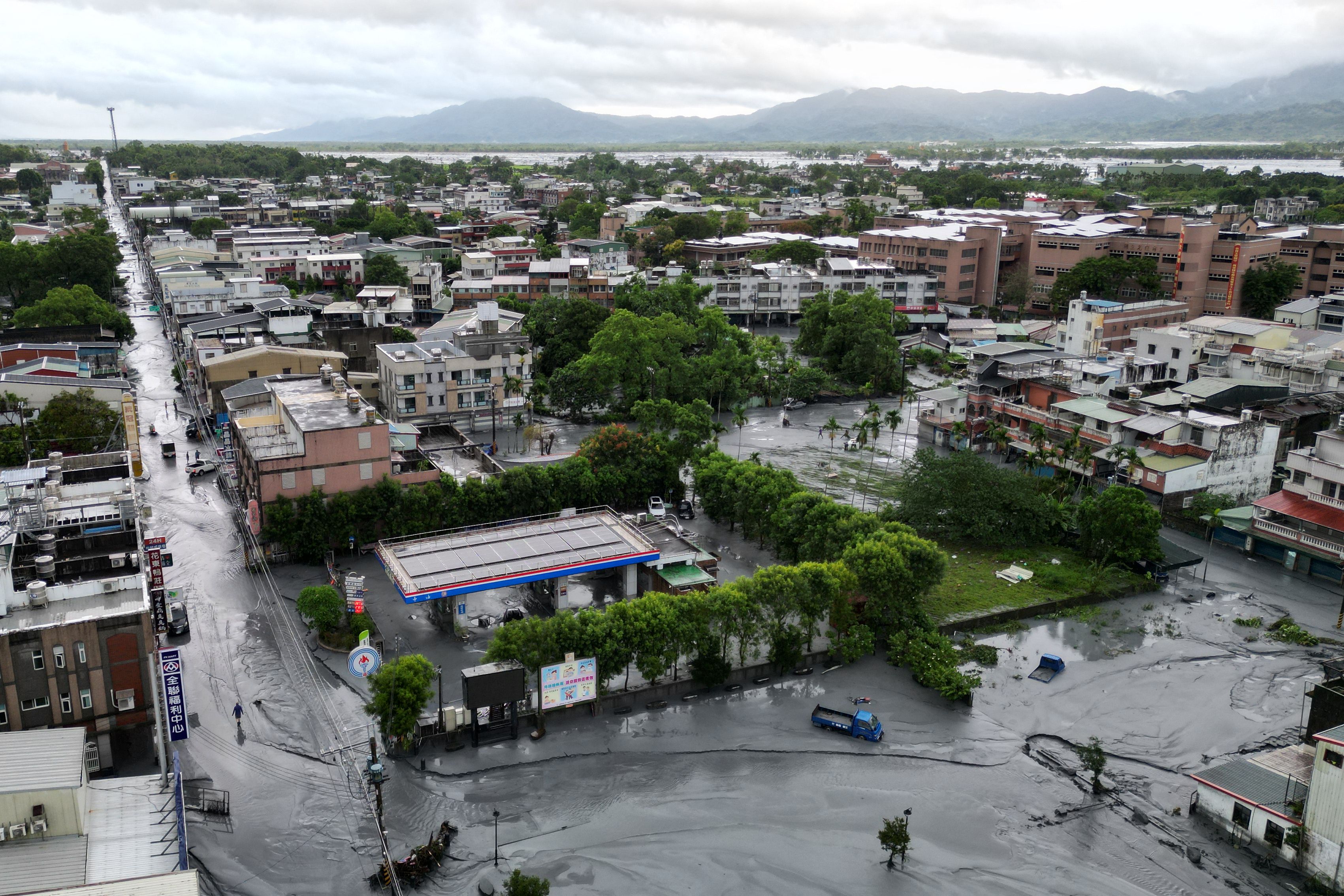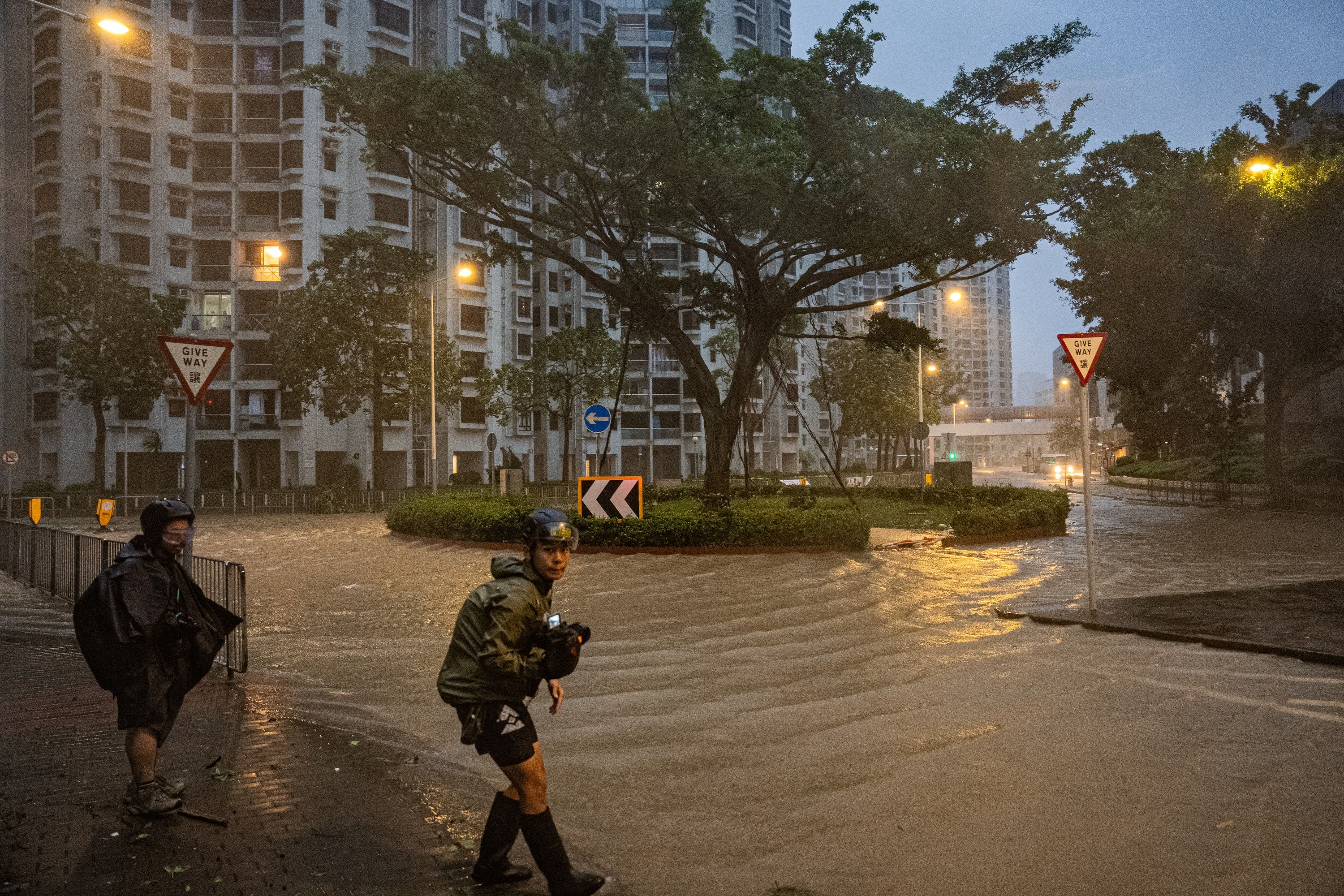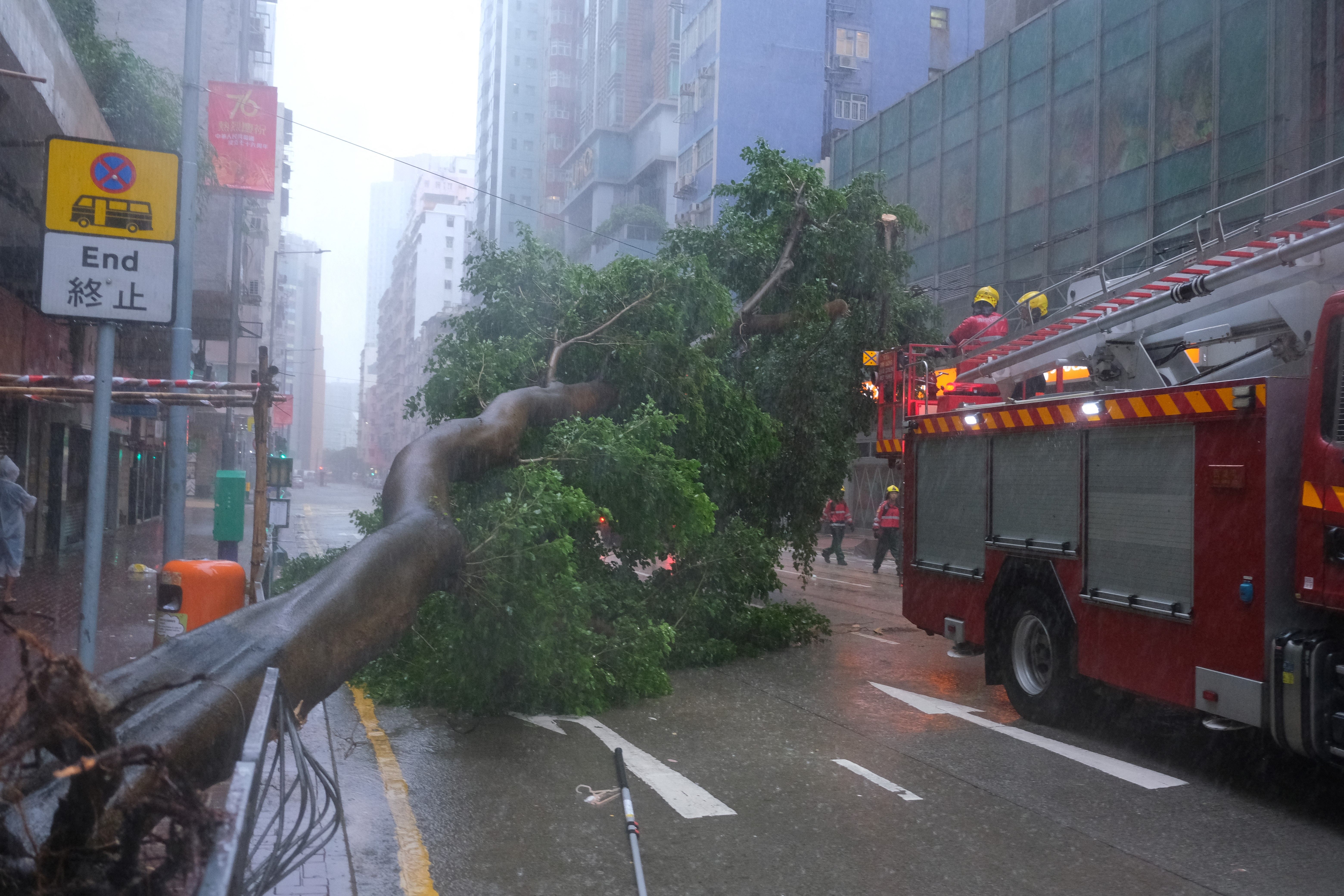Super Typhoon Ragasa unleashed hurricane-force winds and heavy rains on Hong Kong and southern China on Wednesday morning local time, as officials in Taiwan reported 14 deaths from the strongest storm to hit the planet this year.
The big picture: Officials in Taiwan's Hualien County told media that the deaths were due to a lake barrier bursting during the storm and that 124 people remained missing.
- The typhoon's outer rim has been pummeling Taiwan since Monday.
- The storm also pummeled the Philippines, resulting in three deaths.
Between the lines: Climate change is increasing the magnitude by which storms rapidly intensify, studies show.
- Higher rainfall rates are another indication that climate change is influencing nature's strongest storms.
In photos:

An aerial view shows mud left in the streets as floodwaters recede in Hualien, Taiwan, on Sept. 24, following the bursting of a barrier lake. Photo: STR/AFP via Getty Images

A reporter walks in floodwaters as Super Typhoon Ragasa nears Hong Kong on Sept. 24. Photo: Leung Man Hei /AFP via Getty Images

Firefighters beside an uprooted tree as Super Typhoon Ragasa hits Hong Kong on Sept. 24. Photo: Tommy Wang/AFP via Getty Images

Almost-empty shelves are seen as residents stock up on supplies at a store ahead of the super typhoon on Sept. 22 in Shenzhen, Guangdong province of China. Photo: Ge Ziwen/VCG via Getty Images
Go deeper: Rainstorms are getting more intense amid climate change







